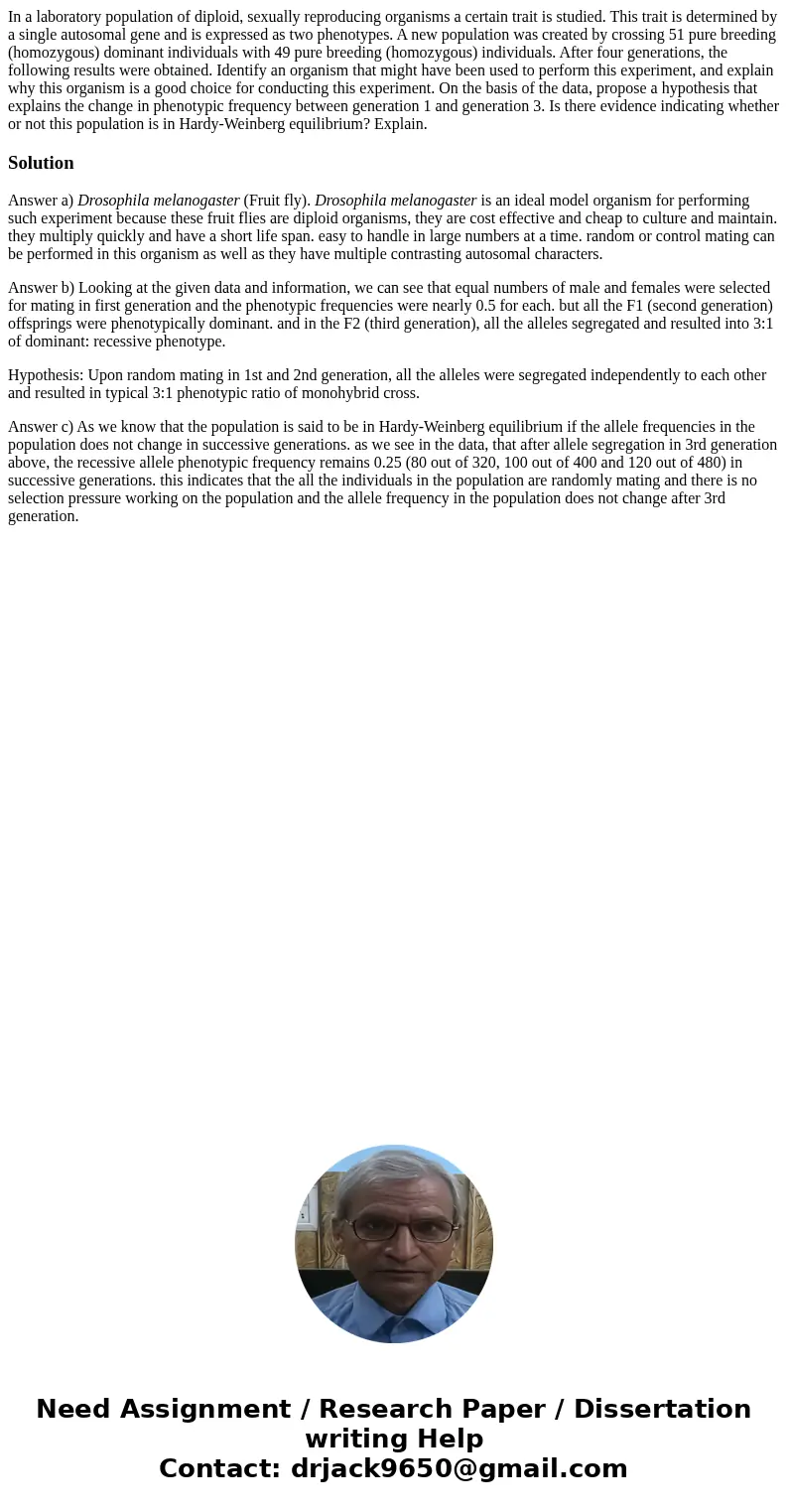In a laboratory population of diploid sexually reproducing o
Solution
Answer a) Drosophila melanogaster (Fruit fly). Drosophila melanogaster is an ideal model organism for performing such experiment because these fruit flies are diploid organisms, they are cost effective and cheap to culture and maintain. they multiply quickly and have a short life span. easy to handle in large numbers at a time. random or control mating can be performed in this organism as well as they have multiple contrasting autosomal characters.
Answer b) Looking at the given data and information, we can see that equal numbers of male and females were selected for mating in first generation and the phenotypic frequencies were nearly 0.5 for each. but all the F1 (second generation) offsprings were phenotypically dominant. and in the F2 (third generation), all the alleles segregated and resulted into 3:1 of dominant: recessive phenotype.
Hypothesis: Upon random mating in 1st and 2nd generation, all the alleles were segregated independently to each other and resulted in typical 3:1 phenotypic ratio of monohybrid cross.
Answer c) As we know that the population is said to be in Hardy-Weinberg equilibrium if the allele frequencies in the population does not change in successive generations. as we see in the data, that after allele segregation in 3rd generation above, the recessive allele phenotypic frequency remains 0.25 (80 out of 320, 100 out of 400 and 120 out of 480) in successive generations. this indicates that the all the individuals in the population are randomly mating and there is no selection pressure working on the population and the allele frequency in the population does not change after 3rd generation.

 Homework Sourse
Homework Sourse